Significance
Baosheng Dadi Temple is the center for the worship of Baosheng Dadi (the Chinese god of medicine, also referred to as Dadaogong) in Kinmen’s Lieyu Township. In the past, Lieyu Township was an important maritime crossroad, and the original Baosheng Dadi Temple, built during the Ming dynasty, was unfortunately destroyed by Dutch occupiers. The loss of the temple led to the development of a rotating worship system wherein villages took turns enshrining the Baosheng Dadi statue at their local temples. This practice gave the four administrative divisions that made up the system an opportunity to develop strong cooperative relationships, and the sacrificial ceremonies and pilgrimages they organized continued into modern times.
History
Lieyu’s Baosheng Dadi Temple (Dadaogong Temple) was built in the early Ming dynasty. The villages on Lieyu island divided themselves into eight groups that rotated as “master of the incense burner,” the group responsible for organizing the ceremonies and events involved in Baosheng Dadi worship. Sometime between 1522 and 1566, Dutch colonists in Taiwan burned down the temple in an attempt to suppress the local culture, but an acolyte took the temple’s deity statue and hid it in a Buddhist temple in the village of Xifang for safekeeping. With no physical temple in which to enshrine the deity, the rotating worship system was eventually modified. In the early 1600s, local residents reorganized themselves into four administrative divisions that took turns serving one-year terms as master of the incense burner. The master of the incense burner for a given year would enshrine the Baosheng Dadi deity statue in a temple located in their administrative area. Thus, Lieyu Township developed its long-standing practice of rotating responsibility for maintaining a Baosheng Dadi shrine. This became the township’s most important religious activity. In 1991, with the township becoming more prosperous, villagers decided to rebuild Baosheng Dadi Temple. Construction on the palace-style temple began in 1996 and was completed two years later. The main hall was topped with a double-eaved hip and gable roof, while a granite arch-gate was erected in front of the temple. Baosheng Dadi Temple is Lieyu’s most majestic Taoist temple.
Special Features

1The Rotating Worship SystemLieyu residents have worshipped Baosheng Dadi since the Ming dynasty. Although a temple dedicated exclusively to the deity existed, worshippers made use of a rotating worship system under which the villages of the island of Lieyu were divided into eight groups which took turns serving as master of the incense burner, or temple administrator, for a year at a time. After the original Baosheng Dadi Temple was burned down by Dutch occupiers during the Qing dynasty, villagers reorganized themselves into the four administrative divisions of Xifang, Qingqi, Shangku, and Shanglin to take turns hosting the deity statue at their local temples in the absence of a main temple. The villages within each administrative division also shared responsibility for offering sacrifices to the deity. This practice led to Lieyu’s longest-standing and most important temple festival activity, the Inviting Baosheng Dadi Festival, with its accompanying procession. Each year, the heads of the incoming and outgoing administrative divisions would meet to discuss the course of events. The deity would begin his trip between temples on an auspicious day between the 18th and 22nd days of the twelfth lunar month. Worshippers would set up incense burners along the route in greeting, and after the deity had reached his new home, temple troupes would perform and play drums and gongs in welcome.
2The End of the Rotating Worship System
 Over the years, Lieyu Township experienced a population outflow. As the rotating worship system required many people and resources, residents proposed building a major temple to permanently house the deity once again. Construction of Baosheng Dadi Temple, the largest temple in Kinmen, was completed in 1998. After the deity’s statue was enshrined in the temple, the rotating worship system returned to its original form—the masters of the incense burner began taking turns performing a sacrificial ceremony on the 15th day of the third lunar month and serving the deity in the temple. The four administrative divisions continued to alternate responsibility for leading the deity in procession with gods from other villages on a patrol around Lieyu on the fourth day of the first lunar month. The rotating temple enshrinement system in use since the destruction of the old temple is no longer practiced.
Over the years, Lieyu Township experienced a population outflow. As the rotating worship system required many people and resources, residents proposed building a major temple to permanently house the deity once again. Construction of Baosheng Dadi Temple, the largest temple in Kinmen, was completed in 1998. After the deity’s statue was enshrined in the temple, the rotating worship system returned to its original form—the masters of the incense burner began taking turns performing a sacrificial ceremony on the 15th day of the third lunar month and serving the deity in the temple. The four administrative divisions continued to alternate responsibility for leading the deity in procession with gods from other villages on a patrol around Lieyu on the fourth day of the first lunar month. The rotating temple enshrinement system in use since the destruction of the old temple is no longer practiced.
3The Temple’s Architectural Style Baosheng Dadi Temple is a palace-style complex with two rows of buildings. The front hall building is capped by double roof ridges, while the main hall was built with a double-eaved hip and gable roof. The archway serving as the temple’s main gate is made of granite and bluestone. It is one of Lieyu’s most famous landmarks, and Kinmen’s largest temple, at seventeen meters tall and with an area of 650 square meters. The temple’s dragon columns, walls, and carvings were all made of bluestone. The main hall is dedicated to the red-faced Baosheng Dadi, the Chinese god of medicine, also known as Dadaogong. The hall’s shrine houses two statues of the deity, with lamp holders presented as an offering by Taipei’s Dalongdong Baoan Temple on either side.
Baosheng Dadi Temple is a palace-style complex with two rows of buildings. The front hall building is capped by double roof ridges, while the main hall was built with a double-eaved hip and gable roof. The archway serving as the temple’s main gate is made of granite and bluestone. It is one of Lieyu’s most famous landmarks, and Kinmen’s largest temple, at seventeen meters tall and with an area of 650 square meters. The temple’s dragon columns, walls, and carvings were all made of bluestone. The main hall is dedicated to the red-faced Baosheng Dadi, the Chinese god of medicine, also known as Dadaogong. The hall’s shrine houses two statues of the deity, with lamp holders presented as an offering by Taipei’s Dalongdong Baoan Temple on either side.
4The Turtle Begging TraditionLieyu residents have traditionally observed the Turtle Begging (qǐguī) tradition, in which they “beg” Baosheng Dadi for peace and security. Petitioners ask the deity a question and then cast divination blocks. Those who receive a ‘yes’ answer (one block face-up, the other face-down) can take home a turtle-shaped rice cake and eat it to obtain peace and security.
Reminders
Baosheng Dadi Temple organizes an annual divination block throwing competition on the first to third days of the first lunar month. The entry fee is NT$300. The person who throws the highest number of ‘yes’ answers in the finale of the competition wins a car.
Panoramic
Directions